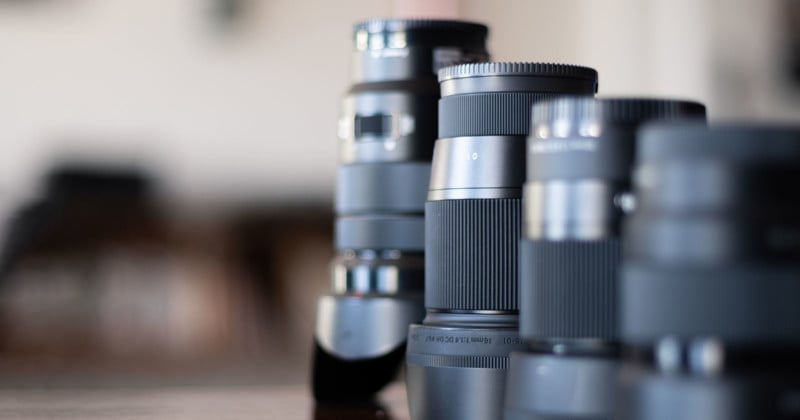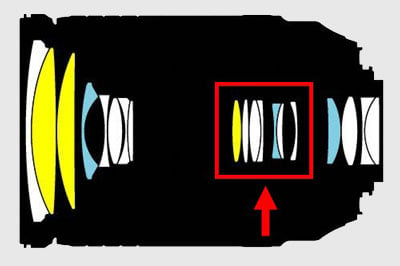What is Focus Breathing in a Camera Lens?

Focus breathing is a term that is often used when discussing the features and specs of a camera lens. It is an issue that occurs across a wide range of lenses, and it is one that can negatively affect your photography and videography in certain situations. In this article, we will take a look at what focus breathing is, the situations it affects, and how you can avoid it.
Table of Contents
What Focus Breathing Is
To begin with, what is focus breathing, anyway? Also known as “lens breathing,” it has to do with lenses and how they magnify images at different focusing distances.
Focus breathing refers to when a lens’s focal length changes subtly (or noticeably) as the focusing distance changes.
Both zoom and prime lenses exhibit this behavior to varying degrees. One way to see this for yourself is to frame a scene and then change your lens’s focus from minimum to infinity and pay close attention to the edges of the frame — you may notice that the shot seems to “zoom” ever-so-slightly in and out as the focal distance changes.
You can also take two photos keeping everything the same and just have the subject in focus at infinity in one case and at the minimum focusing distance (MFD) in the other. You will notice that there is a slight difference in the focal length (magnification) even though they were shot while keeping the focal length on the lens the same.
This is an exaggerated case of focus breathing since it increases as the distance between the two focused subjects (i.e. the focusing distance in the two photos) increases. Both the magnification and the angle of view change which gives us an apparent change in focal length.
A Visual Example of Focus Breathing
In the two example photos below, you can see that as the focus is changed from the mobile holder in the foreground to the mirror holder in the background, the second image seems to have been magnified and a little cropped in (they were not cropped in post-production).


Here is a GIF with the two photos alternating back and forth — notice how angle of view and magnification slightly change when only focus is adjusted:

Why Focus Breathing Occurs
Focus breathing occurs because most modern camera lenses typically use an internal focusing system. In these lenses, if we change the focus of the lens either manually or with autofocus, then the front of the lens element and the barrel of the lens do not move or rotate, which means only certain smaller lens elements inside the lens barrel need to move.

This type of internal focus system has a number of benefits, including portability (smaller and lighter designs), faster focusing (due to the smaller set of focus elements), compatibility with certain lens filters and lens hoods (due to front lens element not rotating during focusing), and a constant lens length (the front element does not extend during focusing, particularly helpful in macro photography).
The tradeoff, however, is focus breathing. Focusing on internal focus lenses causes the internal element to move independently of the other lens elements, causing a slight change in focal length.
There is a balance between how silent and optically perfect the lens is versus how much focus breathing it exhibits. This boils down to the design and construction of the lens and is also reflected in the price. Thus cinema lenses exhibit the least amount of focus breathing (or virtually none at all) but are priced much higher as compared to a photography lens designed primarily for still photos.
Problems Caused by Focus Breathing
The reason why cinema lenses need to eliminate focus breathing is that this phenomenon is clearly visible in videos and can be a big distraction. You will also notice that two lenses with the same zoom range and aperture may be marked as cinema and non-cinema lenses, and focus breathing is one of the features that differ between the two (among others).
One situation where focus breathing might affect still photos to a certain degree is when you try to focus stack images, especially when shooting with lenses that exhibit a lot of focus breathing. A photographer may take multiple images which vary in focus from the foreground (MFD) to the background (infinity) to get everything in focus during focus stacking. Thus the series of stacked images would vary in focal distance and magnification and this causes issues during post-production.

Newer versions of Photoshop are able to handle the slight changes during image stacking. Because of focus breathing in lenses, you need to crop the final stacked image even though the images were shot on a sturdy tripod.
Avoiding the Focus Breathing Issue
So how does one eliminate or at least reduce focus breathing artifacts from photos? The simple answer is to upgrade to or buy a lens that does not exhibit focus breathing since it’s a property of the lens and not actually how you use it. But you can still try reducing it by using your existing lens in certain ways.
Since the focus breathing is most pronounced in a lens for two photos taken at extreme focal distances (one focusing at infinity and one focusing on the minimum focus distance) you can try reducing this distance and take photos in which the subjects are at almost the same distance from the lens so that you do not have to change (or at least minimize the change in) the focus as much between the shots.
Most lenses manufactured for photography, including higher-end ones, do not clearly state if the lens suffers from focus breathing, so it becomes difficult to shop for lenses and do a side-by-side comparison if it is an optical issue that is important to your particular photography work. If the focus breathing magnitude is not mentioned for a lens or a lens combination you wish to compare then you can look at the maximum magnification factor (mostly denoted as 0.15x, 0.25x, 0.38x, 0.71x, etc). The higher the magnification factor the less focus breathing the lens suffers from.
The other way to compare two lenses to check for focus breathing issues is, as described earlier, to take real-world photos with it (on a tripod) and see how much the images get magnified. Take two photos one at an object which is at or near the minimum focusing distance of the lens and the other at infinity and repeat this for the other lens or lenses. The phenomenon is clearly visible on the edges if present.
Should You Care About Focus Breathing?
The final question arises here. Whether you should care about focus breathing and to what extent. As discussed earlier, if you are shooting videos or are planning to, then focus breathing should be a big factor in your lens choices. It shows up clearly in a video if the focus is changing within the same scene. These can be slightly remedied with modern video editing software, but those can make the video jittery and unprofessional.
On the other hand, if you are using the lens primarily for still photos, then focus breathing will generally not make a difference except in certain situations like focus stacking or photos used in scientific studies. Even if you try to compare photos shot on a lens with high focus breathing and a large distance between the subjects in focus between the two shots, it’s very difficult to see issues unless you look at the edges of the frame.
Furthermore, photographers typically recompose photos on the fly as they change their focus, allowing the end composition to always be what they were aiming to capture.
In the end, focus breathing should not matter much to you unless you are primarily into video, but at least now you will know why two images from the same camera setup and the same settings may look a little bit off.
Image credits: Stock photos from Depositphotos



